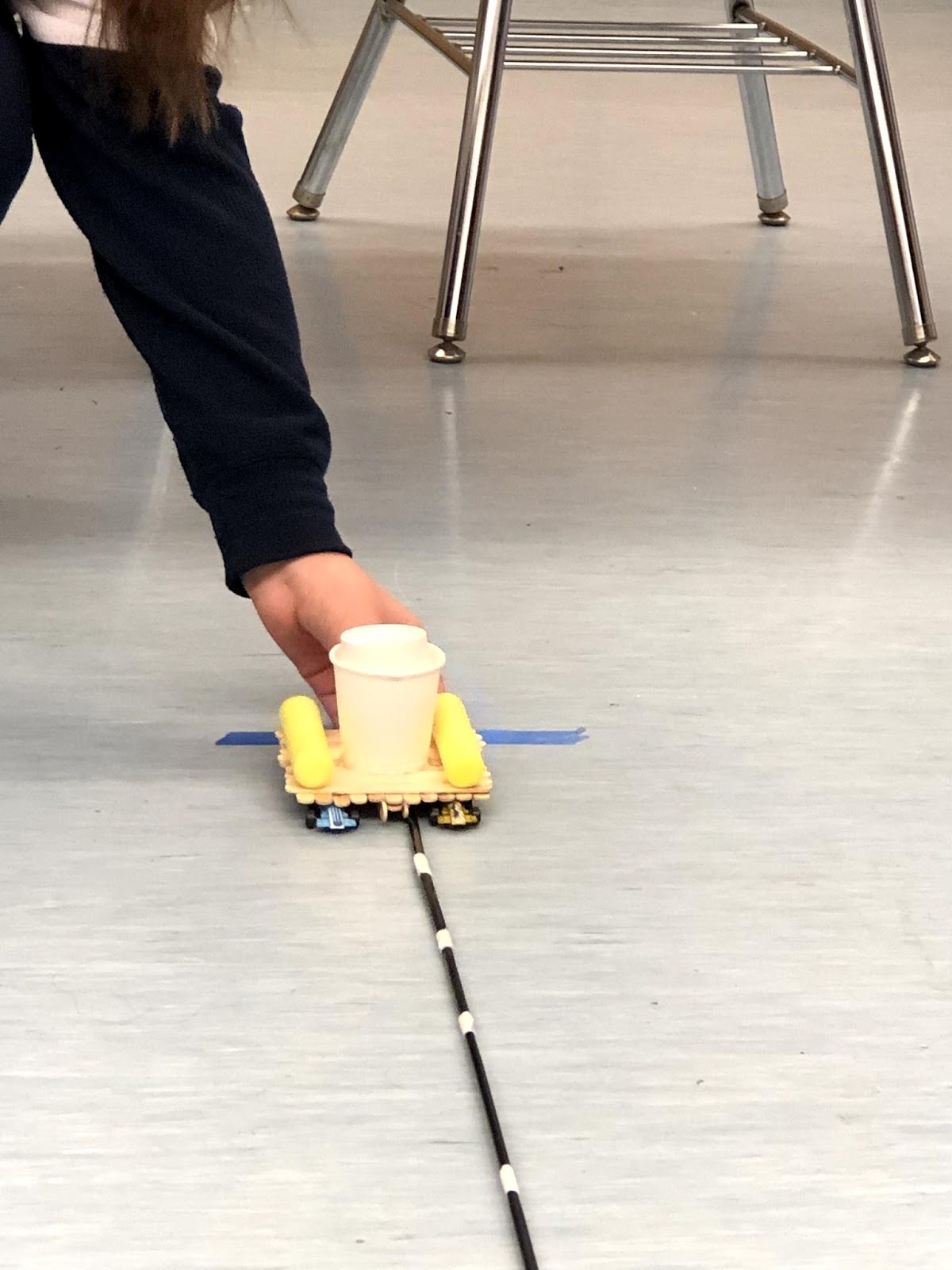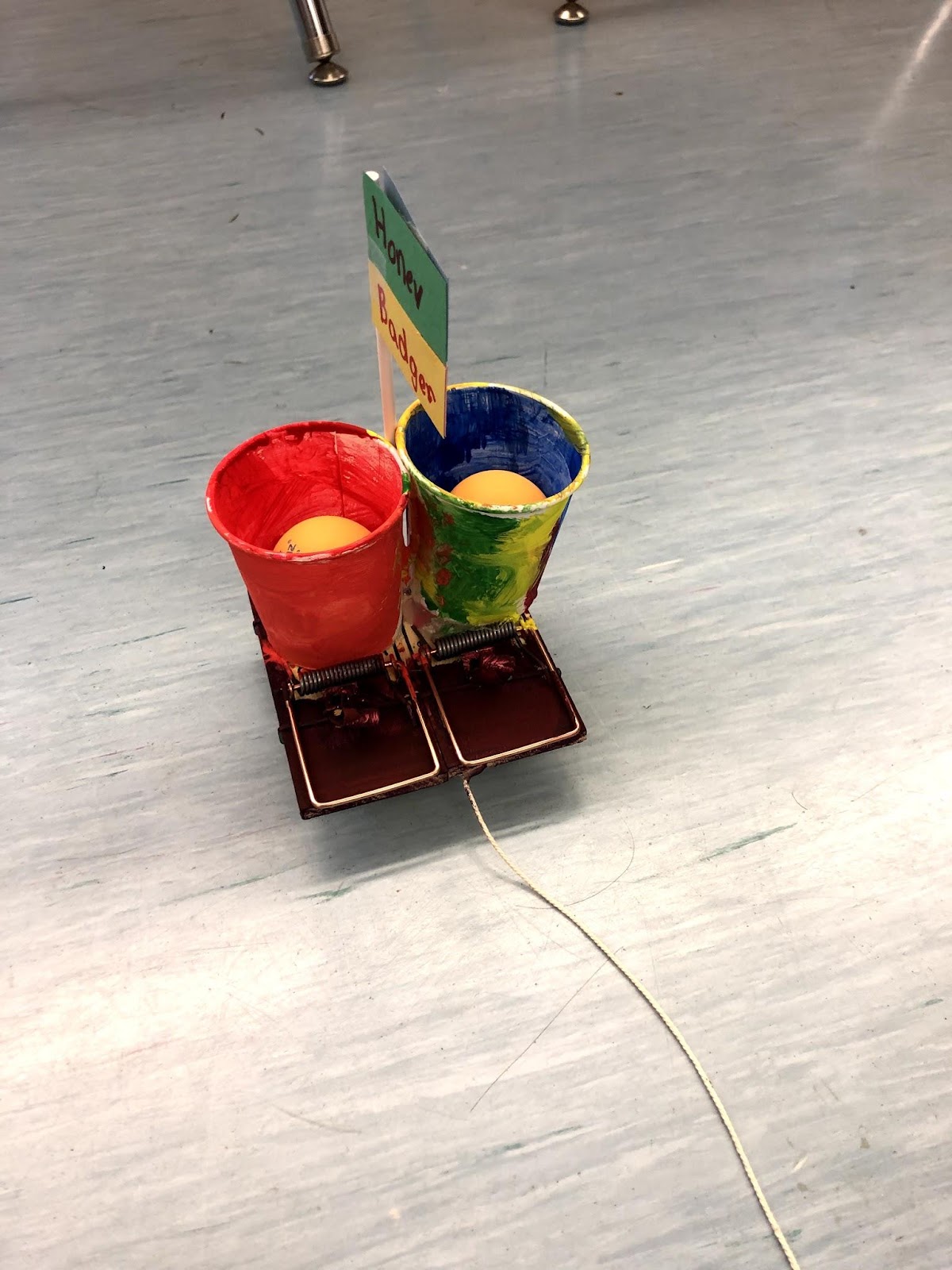A&P students recently tested different reflexes and reaction times, including pupillary, patellar and Achilles reflexes. Using reaction time rulers, students discovered that reactions times increased with distractions such as talking on their phones.
Tuesday, April 30, 2019
Monday, April 29, 2019
Curriculum update - 6th and 7th grade science
7th-grade science students recently learned about communication and transportation systems. During this communication unit, students examined the key components of a communication system (source, encoder, transmitters, receiver, decoder, and storage) and identified which systems were best suited for a variety of scenarios.


In March, 6th-grade students wrote a letter, a speech, or an argument as Alfred Wegener's attorney, that used evidence to support Wegener's theory of continental drift. These creative pieces of writing were great - ask your students to see theirs!
More recently our 6th-grade students focussed on how fossils and layer of rock tell us the story of Earth's history. Students successfully looked at images of rock layers and could tell you what formed first, second and third and if there was an intrusion or a fault that cut across the layers. In addition, students could assess given fossils and indicate what the environment was like at the time, how it changed and what index fossils tell us about how old other fossils and sediments are based on their location!
In our transportation unit, students examined how transportation systems are designed to move people and goods using a variety of vehicles and devices. Additionally, students identified subsystems of a transportation vehicle. After reviewing transportation subsystems and the universal design process, students created a modification to a transportation vehicle to transport an 8ft tall snowman in July, in one piece, without melting!
The engineering portion of this unit challenged students to use the concept of systems engineering in order to model inputs, processes, outputs, and feedback to design a prototype to move goods across the classroom.
The engineering portion of this unit challenged students to use the concept of systems engineering in order to model inputs, processes, outputs, and feedback to design a prototype to move goods across the classroom.
In March, 6th-grade students wrote a letter, a speech, or an argument as Alfred Wegener's attorney, that used evidence to support Wegener's theory of continental drift. These creative pieces of writing were great - ask your students to see theirs!
More recently our 6th-grade students focussed on how fossils and layer of rock tell us the story of Earth's history. Students successfully looked at images of rock layers and could tell you what formed first, second and third and if there was an intrusion or a fault that cut across the layers. In addition, students could assess given fossils and indicate what the environment was like at the time, how it changed and what index fossils tell us about how old other fossils and sediments are based on their location!
Curriculum update
In March the 8th grade is working on finishing up their units on Earth Science. The students are studying the rock cycle, weather, and global climate change. Students created water cycle videos, analyzed an Ice Age preview to determine how scientifically accurate it was. Lastly, students will examine changes on Earth due to climate change using a NASA app. In Intro to Engineering, the clusters are entering their final rotation of Genius Hour, EV3 robots and Solar Cars.
Sunday, April 28, 2019
High School Science Curriculum Update
APES
The AP Environmental science class recently explored exposure to toxins in our lives including hidden fragrances - everyone should watch the movie "Stink". We had an enlightening presentation by Medfield parent Erica Reilly on hidden toxins in household items and what we can do about it. The environmental impacts of air and water pollution are also on our agenda - all of this while preparing for our upcoming AP exam.
BIOLOGY
In Biology I students learn about the scientific method and how to write a good lab report. Recently students had the opportunity to apply what they learned by designing their own experiment to determine the effect of a variety of variables on enzyme activity. Students conducted their experiment, then organized and analyzed their data to determine what the effect of their chosen variable e.g. temperature, pH, or enzyme concentration, was on the action of their enzyme.
Subscribe to:
Comments (Atom)